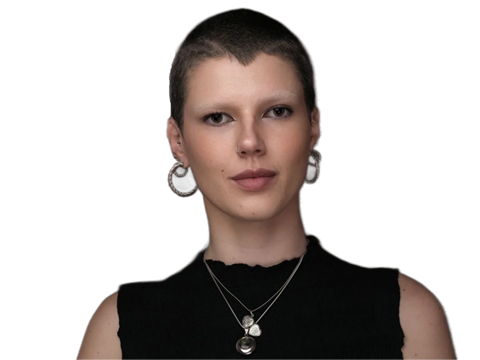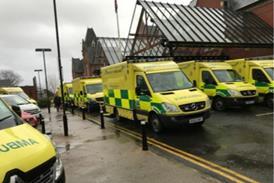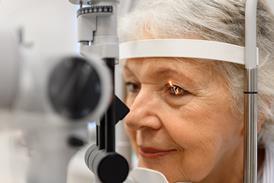With the view that clinical commissioning groups will encourage some services into the primary care setting, there is a risk that the complex area of sleep medicine will be ‘dumbed down’ by a one size fits all approach

Sleep medicine is one of the newer medical specialities the NHS has encompassed over the last 20 years. To most, it means the diagnosis and treatment of obstructive sleep apnoea, a common condition that affects about 4 per cent of middle aged adults.
‘Obstructive sleep apnoea is often missed when patients present to GPs for other conditions’
The condition has both medical and social consequences. Hypertension and type 2 diabetes are common associations, leading to increased risk of stroke and heart attack with premature death. Quality of life is also reduced by daytime sleepiness, which can affect work and family life.
Despite this, in practice sleep apnoea is often missed when patients present to GPs for other conditions.
Busy workload
The Sleep Disorder Centre atQueen Victoria Hospital Foundation Trust in West Sussex is 22-years-old and treats almost 2,000 new patients per year. Around 40 per cent of the sleep disorder workload in the South East outside of London comes through the unit.
The more complex patients require care to be administered by only the senior band 5-7 technicians, making the referral to treatment 18 weeks pathway versus the duty roster an administrative a nightmare.
‘To cope with the increasing workload, the unit has moved towards outpatient screening techniques’
The Achilles’ heel for most sleep centres is follow up appointments. An average of 10 new patients per week commence therapy with continuous positive airway pressure (CPAP) machines at the centre and, because sleep apnoea is a chronic condition, they require ongoing support indefinitely.
With over 8,000 patients using CPAP, follow up clinics are evermore hard pressed. The office receives around 100 phone calls per day from patients who wish to book appointments or discuss problems.
Outpatient screening
To cope with the increasing workload, the unit has moved towards outpatient screening techniques based around pulse oximetry for suspected sleep disordered breathing.
To decide which patients are suitable for this simple test, protocols have been developed using questionnaires to supplement the index of suspicion gained from the GP referral letter.
‘One of the biggest challenges is the growth of referrals with obesity hypoventilation syndrome’
This works well, with a high rate of positive results, shortening the time from referral to treatment, while freeing up inpatient beds for more complex cases.
One of the biggest challenges is the growth of referrals with obesity hypoventilation syndrome. Ten years ago, it was unusual to have a patient in clinic with a body mass index of greater than 40kg/m2 – the “class 3 morbidly obese” category.
These patients do not fit into the “easy to treat” category, and putting them onto fixed pressure or auto-adjusting CPAP without very careful monitoring is asking for trouble; it can easily tip them into type 2 respiratory failure with systemic carbon dioxide retention. In common with chronic obstructive pulmonary disease, they are more likely to require non-invasive ventilation.
Tall thin group
At the opposite end of the spectrum is another group of patients with a breathing disorder at night, and often with equal amounts of daytime sleepiness resulting in a poor quality of life.
This is the “tall thin group”, often with a facial shape that suggests upper airways resistance to breathing during sleep.
‘Mistakes will be made if a cheap one size fits all approach is adopted by primary care’
A subset of these patients is now routinely offered the chance to undergo bimaxillary osteotomy with a combined multidisciplinary approach from the sleep centre, orthodontics and maxillofacial teams.
This approach can cure the problem, without the need for ongoing treatment with CPAP or mandibular advancement splints, and is ultimately very viable economically.
However, it is not something that can be offered by a GP and their practice nurse without the necessary experience and training in sleep medicine, orthodontics and surgery.
Dumbing down
There is a perception that clinical commissioning groups will start to encourage such services into the primary care setting, with “practice nurses trained to do the initial fitting of masks, with patients then contacting a helpline with difficulties”.
This dumbing down is of enormous concern because, in this complex field of medicine, mistakes will be made if a cheap one size fits all approach is adopted by primary care.
‘It is essential that the right clinicians with the correct training and experience are in control of the medicine’
While quality costs money, any NHS organisation is very aware of the responsibility to the public finances as it does its level best not to cut the corners that are likely to lead to complications.
That said, there are aspects of the patient pathway that might be moved into primary care with benefit, and the “hub and spoke” approach that works well in other specialties is certainly worthy of further exploration.
However, it is essential that the right clinicians with the correct training and experience are in control of the medicine. Although we are moving in the right direction, we are certainly not there yet.
Dr Peter Venn is a sleep physician at Que en Victoria Hospital Foundation Trust



























1 Readers' comment